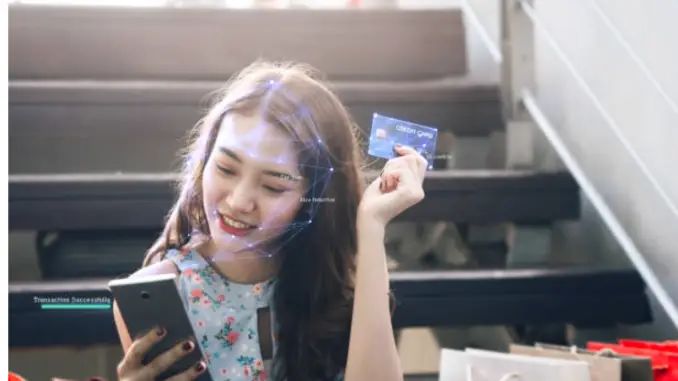
Some people have a natural ability to identify faces, specifically when it comes to recognizing the faces of kin by unique features like mouth, eyes, and nose. Although, facial recognition technology works on an algorithmic scale through facial verification algorithms that function similarly.
While humans perceive faces, facial recognition technology perceives data. Although many people understand how facial recognition technology works, some may not fully comprehend the verification process. The potential implications of this technology are being assessed by experts exploring its abilities, such as human rights advocates and politicians. Staying informed about this technology is essential in protecting businesses from fraudulent activities.
The Science Behind Facial Recognition
Face verification uses AI algorithms to cross-check customers’ facial features with their identity documents to authenticate their identity. This process effectively mitigates the possibility of fraud techniques such as spoof attacks, deep fakes, and replay attacks. By implementing face verification, businesses can reduce the risk of fraud and ensure compliance with KYC regulations.
Facial recognition is no longer a far-fetched concept limited to science-fiction movies. Due to the increasing frequency of identity and data theft, verification services have gained widespread adoption among businesses globally.
Features of Face Recognition Online
Beyond just validating the authenticity of individuals, face verification presents additional features that many companies aren’t aware of. Thus, companies should be familiar with what this advanced biometric technology offers before implementing it.
Despite concerns surrounding privacy and ethics with face verification, its advantages outweigh these potential drawbacks. Here’s why an AI face recognition service is an excellent investment in the current digital age.
1. Facial Recognition can also Recognise Objects
Facial recognition advanced technology has the ability to identify more than faces, it can also detect and classify objects. It means that algorithms are scheduled to identify and categorize things like trees, cars, colors, and anything at a large scale. The technology’s versatility has contributed to a booming facial recognition market, which is projected to be worth $12.67 billion by 2028.
2. It’s Just as Good as the Data it is Trained With
Powered by artificial intelligence, and facial recognition technology tends to create biases due to its dependency on training data. As a result, it is essential for leaders to employ appropriate technologies and best practices to ensure that the use of AI is fair and ethical.
3. Improve Customer Experience Security Through Integration
Face verification technology provides an extra layer of security to any user experience, making it a reliable and valuable tool. Anyway, its utilization is restricted by laws that restrict business scope and capacity. Therefore, it’s essential to educate customers and companies about the evolving regulatory landscape.
It’s crucial to thoroughly understand data privacy laws that vary across jurisdictions. Moreover, organizations must be transparent and clear about how accumulated information will be kept and utilized.
4. Simplifies Numerous Aspects of Everyday Life
The process of identifying and verifying an individual’s facial features is a face verification process. Although, a few limitations and policy concerns need to be addressed, streamlining several aspects of daily life. It simplifies tasks such as financial transactions, traveling, and diagnosing medical conditions by investigating possible risks. Moreover, organizations utilize this to recognize legitimate customers worldwide.
5. Goes Beyond Mere Convenience
Facial recognition technology has numerous advantages beyond its convenience. It can aid law enforcement in locating missing children and identifying suspects. Furthermore, it has facilitated the development of a mobile app that assists the visually impaired in understanding the facial expressions of others.
6. The latest Legislation is a Barrier to its Widespread Adoption
The implementation of facial recognition is encountering significant barriers due to the latest rules and regulations. Various countries have restricted the use of facial recognition systems due to concerns regarding their illegitimate and unauthorized utilization.
As a result, governments must specify the regulatory framework for such technology. They also decide which government level should be accountable for establishing laws and regulations. Failing to set clear and valuable guidelines leads to a complicated and confusing regulatory environment for service providers. It hinders their ability to develop and market facial recognition technology.
7. Facial Recognition Technology is Hard to Hack
Facial verification offers a superior level of security compared to other authentication methods due to its high resistance to hacking attempts. Unlike passwords, which are susceptible to being compromised by cybercriminals, facial verification relies on unique facial features to authenticate individuals. Not only this, but it also gives them access to a precise service.
Key Takeaways
Facial recognition online has multiple challenges and benefits that must be considered before executing it. The advanced biometric technology allows an additional security layer, aids law enforcement, simplifies daily tasks, and can potentially recognize objects.
Although it’s dependent on creating biases and training data, concerns regarding ethics and privacy. The current legislation also restricts its adoption, and the administration should set clear guidelines for its usage.
It’s essential for businesses to stay knowledgeable about this technology, ensuring its use is ethical and fair while complying with regulatory frameworks.

Leave a Reply